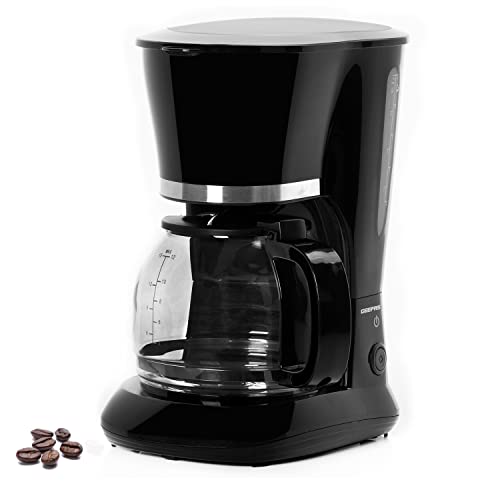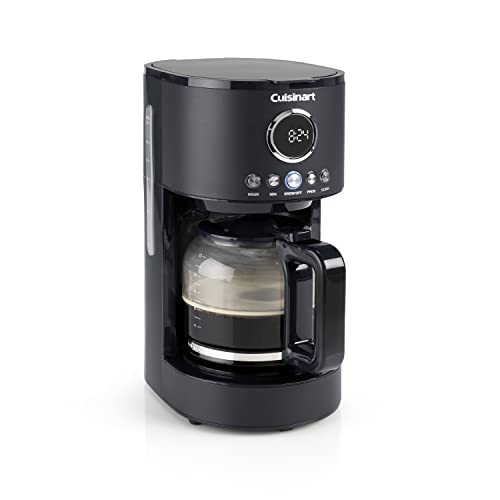20 Things You Need To Know About Drip Coffeee

2025-02-21 21:13
92
0
본문
 The Importance of Drip Coffee Makers
The Importance of Drip Coffee MakersDrip coffee is a popular method of brewing coffee in which convenience is combined with quality. The heating element makes sure that the water is at the ideal brewing temperature and the showerhead even distributes the water across the grounds to ensure constant extraction.
 But, a variety of variables can affect the taste and flavor of drip coffee. Exploring these variables can help you find the perfect cup that is suited to your tastes.
But, a variety of variables can affect the taste and flavor of drip coffee. Exploring these variables can help you find the perfect cup that is suited to your tastes.The process of brewing
Drip coffee makers use gravity and filtration to remove the flavors of ground coffee beans. You can also control the amount of water used in each coffee brew. This will help you create the perfect cup. There are a variety of factors that can influence the quality of the coffee you prepare including the brewing time as well as the proportion of coffee to water, and the amount of water used. Making a test of these variables can help you choose the ideal drip coffee maker for your needs.
A good cup of coffee is largely determined by the ratio of coffee to water. A good ratio is 1 part coffee to 16 parts water, but this can be adjusted according to personal preference and desired strength of the coffee. Be aware of the type of grind that you're using. For instance, if using a coarse grinding, you'll need to increase the ratio in order to compensate for the loss of flavor.
The temperature of the water is crucial when making drip coffee. To make a good brew, it should be between 195 and 200 degrees Fahrenheit is ideal. Many drip coffee machines have built-in controls to maintain this temperature. This ensures a consistently top-quality cup.
The filter is the final part of the brewing process. In drip brewing, there are different types of filters, such as metal and paper filters. Paper filters are popular since they're inexpensive and disposable, however metal filters provide better extraction of flavors and are reused. It is important to keep your filter clean regardless of the type. This will eliminate the formation of odors and also the build-up of. You should also clean your coffee maker each month with the mixture of vinegar and water.
The ratio of water to coffee
The ratio of coffee to water is vital to making the perfect cup. Too much water can make the brew bland, while too little will make bitter coffee. The best way to achieve the perfect ratio is using the scale and measuring spoons to accurately measure the water and the coffee. It is easy and quick to accomplish this using the digital kitchen scale.
A drip brewer can also aid in achieving the perfect ratio. You should be careful when choosing a Flavoured filter coffee because it could affect the taste and strength. Select a filter coffee maker that is thick enough to extract all the flavors you like without removing bitterness. Additionally, the temperature of the water should be in the optimal range of 195-205 degrees Fahrenheit to get the best taste and body.
In addition to the brewing process itself, the beans you choose can also affect the ratio of coffee to water. A quality coffee grinder will help you grind your beans evenly and with a uniform texture. You can also alter how much ground coffee you'd like to use per cup.
Infusion-based brewing techniques like the French press, Aeropress, and Chemex are also well-known due to their high extraction and rich taste. However, brewing with immersion aren't as effective as drip brews since the water doesn't remain in contact with the ground for long periods of time. This could hinder the extraction and production of the desired substances that are soluble. This is the reason drip coffee machines are popular because of their effectiveness.
The showerhead
The showerhead of drip coffee makers plays an important role in the quality of the final cup. It evenly distributes hot water across the grounds, ensuring all of them are fully saturated and that extraction is uniform. This produces a balanced, flavorful cup. In addition the showerhead helps to regulate the temperature of the brewing. A properly controlled brewing temperature is essential for the best cup of coffee. Many drip coffee makers certified by SCA include controls built-in to keep the temperature stable throughout the brewing process.
The patented showerhead on the brewer is a horizontal spray that delivers heated coffee grounds to a receptacle. This reduces the formation cradles, which could lead to an over-extraction or coffee flavors and oils. This showerhead offers a higher flow rate and better dispersion of heated water than traditional vertical spray shower heads. The lack of back pressure on the heating elements of the coffee maker allows for more precise control and less cycling of the thermostat.
The SCA-certified drip coffee maker we tested features a stainless steel carafe, a replaceable carbon water filter, as well as a wide showerhead that ensures an even distribution of water over the beans. The showerhead also agitates the grounds throughout the brewing process, mimicking the Moccamaster pour-over method. It's a fantastic machine for those looking to make a delicious cup of coffee without spending a lot of money. The most noticeable feature is the hot plate, which keeps the coffee warm for about 90 minutes. It's a handy feature to have, especially for those who require their coffee right away.
The temperature is rising
The temperature at which drip coffeee is a major factor in the extraction process, influencing the overall flavor of the cup. The ideal temperature for the water should be between 195 and 205 degrees Fahrenheit (90 - 90 - 96 degrees Celsius). Too cold water will result in a coffee that is not fully extracted, while too hot can result in bitterness and excessive extraction. The effects of brewing temperature on the sensory characteristics of drip coffeee have been investigated in a variety of studies.
A series of experiments using a stirred pour-over method discovered that the temperature of the water had a strong effect on the total dissolved solids (TDS) and particle enthalpy (PE) which resulted in higher TDS and PE resulting in more bitter and sour flavors. However, these findings are not universally applicable with differences in particle size and brew time also affecting attribute intensity.
The brewing temperature has a significant impact on the amount of energy consumed throughout the supply chain, and its effect on soluble flavor compounds. It is estimated that brewing accounts for approximately 45 percent of total energy usage in the coffee filter machine industry, despite accounting for Flavoured Filter Coffee other steps such as agronomy at the farm and roasting33. The coffee industry could be significantly affected by lowering the recommended serving temperature.
A recent study employed the same method to determine the effect of different temperatures on the intensity of 31 sensory attributes. The results revealed that the majority of the attributes were positively linked to TDS and negatively correlated with PE. Some attributes, such as black and nutty, displayed a unique pattern with an intensity peak at low TDS but high PE. This was attributed to the fact that these characteristics may be driven by volatile aromatics like B-damascenone, which is extracted slower at lower TDS levels.
The filter
The filter in a drip coffeee is a key component of the brewing process. It is designed to prevent particles from getting into the cup and compromising the taste of the beverage. This timer filter coffee machine comes in a variety of sizes, styles, and materials, such as paper, mesh, and metal. Additionally it is available in a variety of designs and shapes to accommodate various types of coffee makers.
Filters let you have more control over your coffee brewing process. Depending on the filter type it can affect the proportion of water to coffee, the brewing temperature and the size of the grind. This allows you to make the perfect coffee for your tastes and preferences.
This is why drip coffee tends to be less acidic and bitter than espresso. While it might lack the body and aroma of an espresso, a drip coffee can be just as satisfying. It is also more convenient and provides the same amount of caffeine as the French Press.
However drip coffee brewer coffee isn't without its drawbacks. It can, for instance, be a bit bland if prepared correctly. To ensure a balanced flavor it is important to select the proper ratio of grounds and water and the correct temperature of the water. It is also important to tamp the ground beans evenly to prevent uneven extraction and channeling. The shape of the filter will also affect the flavor. Cone-shaped filters disperse water more evenly than those with flat bottoms.

댓글목록0